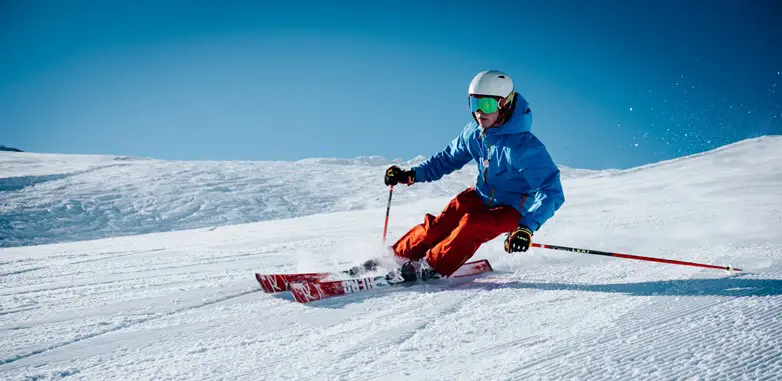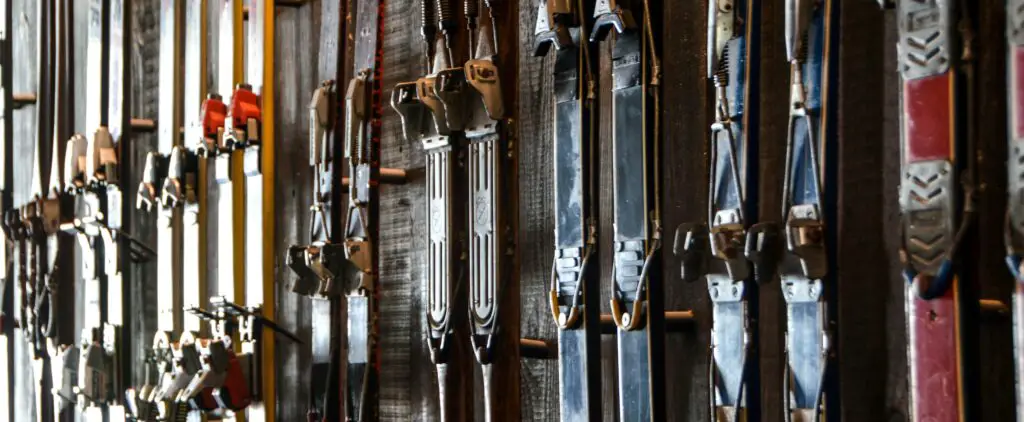The core of the ski is the main aspect of its construction which directly affects how the ski feels and performs. The most common types of material used to compose the core of a ski are wood and foam, but which is best?
In this article, I’ll compare the pros and cons of foam core and wooden core skis so you can decide which is the best option for your next (or first) pair.
Foam vs Wood Core Skis
Skis with a foam core are cheaper and generally lighter compared to skis with a wooden core. However, skis with a wooden core are much more stable, responsive, durable, and less prone to chatter compared to foam core skis which are not recommended for experienced skiers.
| Foam Core Skis | Wood Core Skis |
| Lighter (in most cases) | Heavier |
| Less expensive | More expensive |
| Prone to warping | Hold their shape well |
| More prone to chatter | Feel more stable and responsive |

Foam Core Skis
The advantages of foam core skis is that they are cheap and very lightweight (in most cases) since foam is not very dense. This makes them suitable for lighter skiers and those looking for a nimble feeling pair of skis which feel quite when turning.
However, since foam isn’t very dense, these types of skis don’t feel very stable and are not very durable. They are fine for beginners and children who won’t be pushing them too hard, but they are more prone to warping and lose their camber quickly particularly if used by more advanced skiers.
There are two types of foam core skis:
- Injected foam: cheapest option available but the least stable. These are also known as injected polyurethane (PU) cores.
- Shaped foam: otherwise known as standard foam cores, these are cut from a block and are more consistent and stable compared to injected foam cores but also more expensive.
If you are an adult looking to buy a durable set of skis and have some experience under your belt then foam core skis are not really recommended. You’ll get a better feeling and longer lasting ski if you go for a wood core.
However, if you are a total beginner and would rather buy a pair of skis rather than rent, or a child who is likely to outgrow the skis quite quickly, then foam skis aren’t a bad option. Foam skis can also be okay for racing/ powder skis but not good for all-mountain/ freeride skis.
Foam Core Advantages:
- Inexpensive
- Lightweight so feel nimble
Foam Core Disadvantages:
- Not very durable
- Prone to warping
- Feel less stable and have more chatter

Wood Core Skis
Wood core skis are the gold-standard and often selected if you are looking for the best quality ski in terms of both durability and feel.
Since wood is a stronger and denser material compared to foam, wooden skis last a long time and keep their shape well as they are stiffer. They also feel responsive and stable which is very important for higher level skiers.
Check out this article to learn more about the difference between soft and stiff skis.
There are many different types of wood that can be used to construct the ski’s core.
- Lighter (less dense) woods (e.g. poplar, aspen and bamboo) are more nimble and turns require less effort.
- Heavier (more dense) woods (e.g. maple and ash) feel more stable and are more durable.
Most wooden cores are laminated meaning that many layers of wood are pressed and glued together. Different types of wood therefore can be used in the core to give it different characteristics in terms of flexibility and weight.
Using a particularly heavier wooden ski will make it feel more powerful and explosive when exiting a turn, however they can be inconvenient when touring if you are constantly carrying them around.
Wood Core Advantages:
- Very durable
- Keep their shape
- More responsive
- More stable
Wood Core Disadvantages:
- More expensive
- Heavier
Hybrid Wood/ Foam Cores
Some manufacturers also make skis with hybrid cores for example, Dynastar. Their hybrid core technology consists of wood and PU (injected polyurethane aka foam). The aim is to balance the characteristics of wood and foam cores so that the skis are both lightweight and stable.
There are several blends of wood and foam cores available in the range but they are generally targeted towards high level skiers as opposed to beginners.
Of course, with these blends you are going to get a compromise between the characteristics you would typically associate with either wood or foam core skis.

